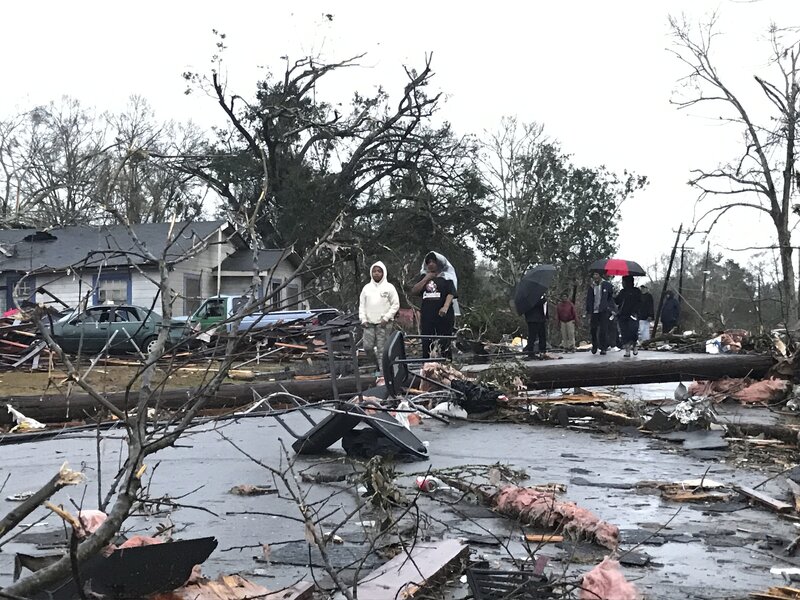At least 4 dead after Mississippi tornado: Why advance warning isn't always enough
Loading...
At least four people have died in Hattiesburg, Miss., after a tornado slashed through the city and its surrounding area in the early hours of Saturday morning, the city confirmed on its Twitter account.
Rescue teams were searching for more victims in the area where the tornado struck, Greg Flynn of the Mississippi Emergency Management Agency told the Associated Press, while Hattiesburg police were making door-to-door rounds. So were firefighters, including some who deployed on foot from a downtown station after it suffered a direct hit, dropping power lines in front of the station’s trucks, according to local station WDAM-TV.
The town’s mayor, Johnny DuPhree, issued an emergency declaration for the city, which has reported “significant injuries” and structural damage.
The unusual, middle-of-the-night timing of the tornado may have presented challenges to emergency personnel, whose improving resources for advanced detection – lead times can reach up to about 15 minutes, reported the Christian Science Monitor last February – still don’t guarantee effective public communication. The National Weather Service sent out a warning at 3:45 am, after the tornado touched down, according to Fox News.
“To repeat, a tornado is on the ground,” read the statement. "TAKE COVER NOW! Move to a basement or interior room on the lowest floor of a sturdy building. Avoid windows. If you are outdoors, in a mobile home, or in a vehicle, move to the closest substantial shelter and protect yourself from flying debris.”
Twisters tend not to strike at night, as the Associated Press noted after a 2012 event. Research meteorologist Harold Brooks of the NOAA National Severe Storms Laboratory told the newswire that only about 10 percent of tornadoes strike between midnight and 6 a.m. But they’re especially dangerous when they do, since they’re harder to see at night, and authorities have a tougher time reaching a snoozing public.
Of the three counties affected on Saturday morning – Forrest, Lamar and Perry – flash flood warnings were in effect for Lamar and northern Forrest, in addition to parts of two other neighboring ones. Three to five inches of rain have already fallen, according to the NWS, and an additional one to two inches could follow.
It comes amid what meteorologists expect to be an outbreak of severe thunderstorms across parts of the Deep South and Gulf Coast that could cause flash flooding this weekend.
More twisters could follow, too. NOAA’s Storm Prediction Center issued a tornado watch valid until 11 a.m. Central Time for parts of central and southern Alabama and the western Florida panhandle, according to Weather.com. Authorities advise people living in those regions to keep close to hand at least two ways of getting storm alerts.
The campus of William Carey University in Hattiesburg was also affected.
"There are some minor injuries," Mia Overton, the university's public relations coordinator, told WDAM-TV. "Officials are working to ensure students are safe and accounted for. There is damage to most buildings on campus, [as well as] cars and a home across campus."
This report contains material from the Associated Press.








